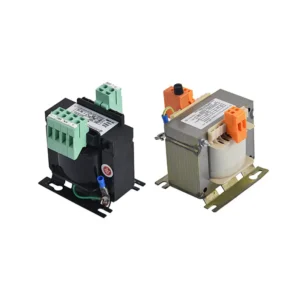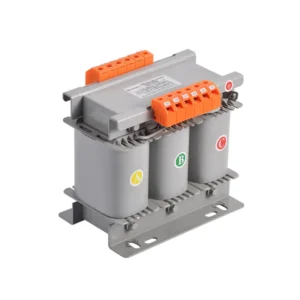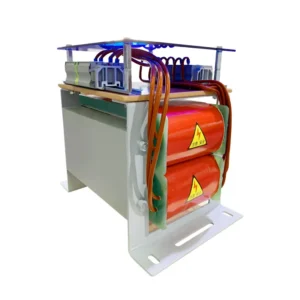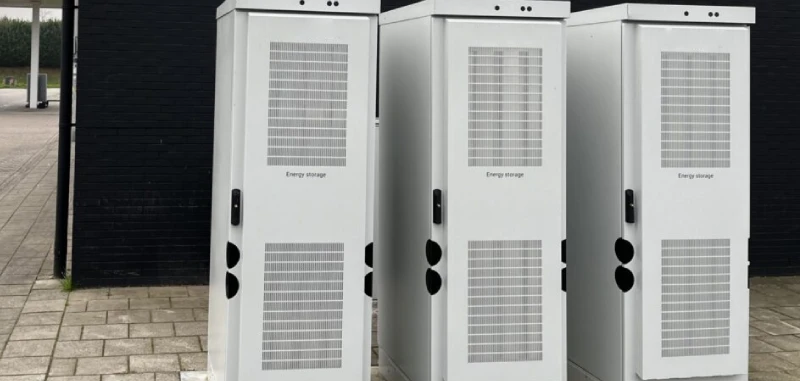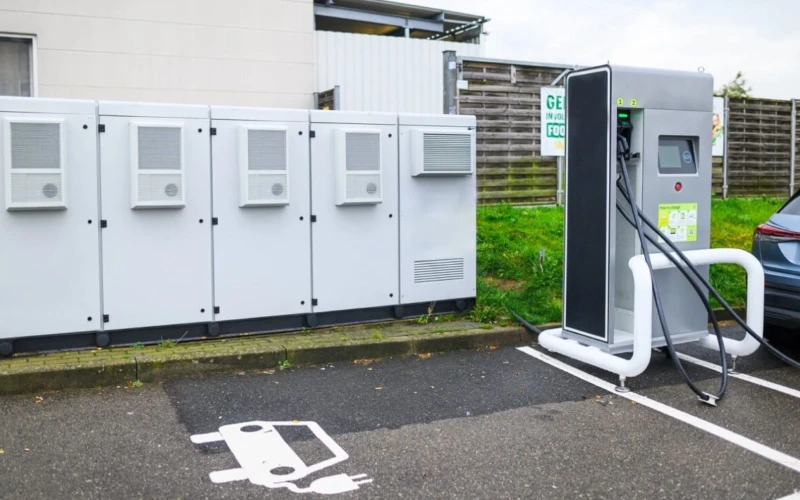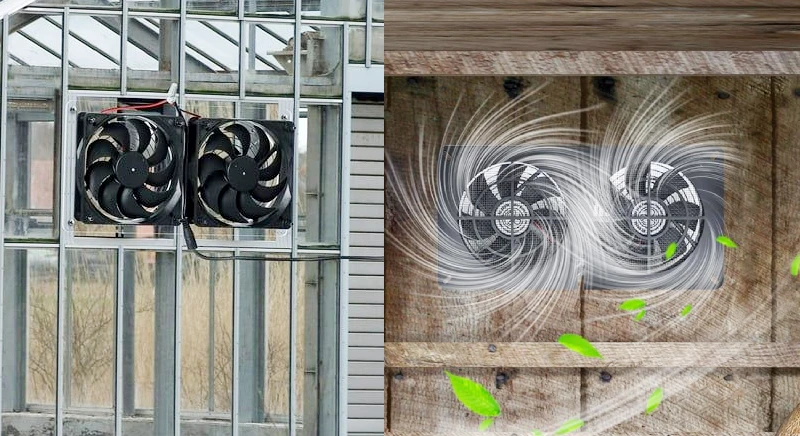In 2025, the Global Energy Policy Trends 2025 demand immediate and strategic action. Global energy demand increased by 2.2% in 2024, driven by climate-induced heatwaves, electrification, and the rapid growth of data centers. The table below highlights that renewables accounted for over 92.5% of new electricity capacity, yet there remains a nearly 900 GW gap to meet climate goals by 2030.
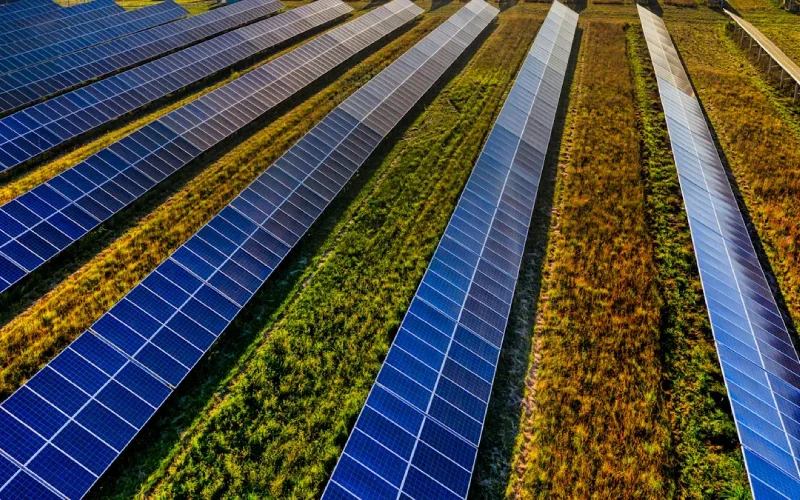
| Statistic Description | Value/Detail |
|---|---|
| New renewable power capacity added in 2024 | 585 GW (15.1% increase from previous year) |
| Share of renewables in new electricity capacity | Over 92.5% |
| Gap to 2030 target if trends continue | Nearly 900 GW shortfall |
Climate change, energy security, and technological advancements are the key energy trends shaping the Global Energy Policy Trends 2025. With global market fragmentation and escalating climate risks, decisive action is essential. Linkewell is committed to supporting your transition toward a more resilient and efficient global energy system.
Global Energy Policy Trends Key Takeaways
- Renewable energy, especially solar and wind, is growing fast worldwide but still needs a big boost to meet climate goals by 2030.
- New climate policies and international agreements push countries to act quickly on clean energy and reduce emissions.
- Electricity demand is rising sharply due to electrification and digital growth, so investing in smart grids and battery storage is essential.
- Energy security faces challenges from global conflicts and supply chain risks; diversifying suppliers and using digital tools can strengthen resilience.
- Clean energy investments and job opportunities are expanding rapidly, making workforce training and fair energy access key to a sustainable future.
Clean Energy
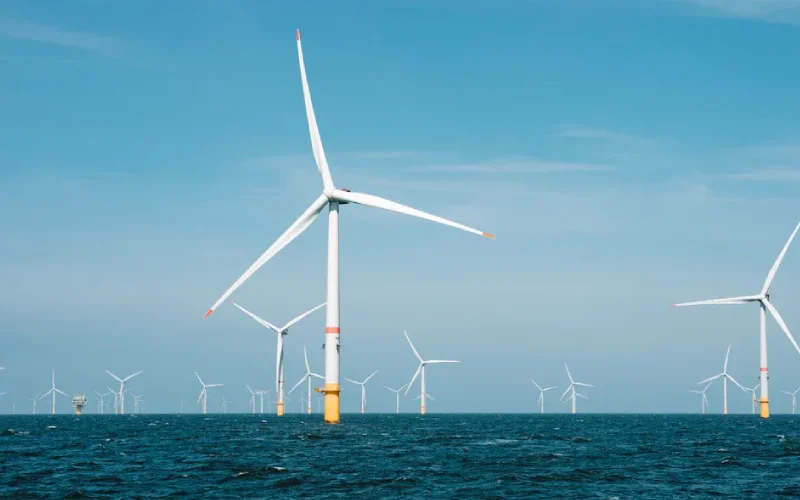
Solar & Wind Growth
You see a remarkable surge in clean energy across the global landscape. Solar and wind power now drive most new renewable energy deployment. In 2024, global installed wind capacity reached over 1,173,581 MW, with 121,305 MW added that year. China led this expansion, contributing 86,892 MW—about 72% of all new wind installations. Brazil, India, and Australia also showed strong renewable energy deployment, while the United States experienced its slowest wind growth in a decade due to policy and supply chain challenges.
| Region/Country | Installed Capacity End 2024 (MW) | New Capacity Added in 2024 (MW) | Growth Rate 2024 (%) | Projection for 2025 |
|---|---|---|---|---|
| Global Total | 1,173,581 | 121,305 | 11.5 | Growth expected but below forecasts; some 2024 installations may shift to 2025 |
| China | 561,492 | 86,892 | 18.3 | Expected to install more than 87 GW in 2025, maintaining dominant role (72% of global new capacity) |
| Brazil | 34,000 | 5,420 | 19.0 | Continues as 2nd largest market for new installations |
| United States | 154,609 | 4,154 | 2.8 | Slowest growth in a decade; future uncertain due to policy and supply chain issues |
| India | 48,163 | 3,427 | 7.7 | Expected to maintain 4th largest capacity; offshore wind and repowering to boost growth |
| Germany | 72,683 | 3,208 | 4.6 | Slightly lower new installations than 2023 |
| Australia | 15,288 | 3,299 | 27.5 | 5th largest market for new installations in 2024 |
| United Kingdom | 32,360 | 2,324 | 7.7 | Moderate growth |
| Spain | 32,007 | 1,210 | 3.9 | Moderate growth |
| France | 24,383 | 909 | 3.9 | Moderate growth |
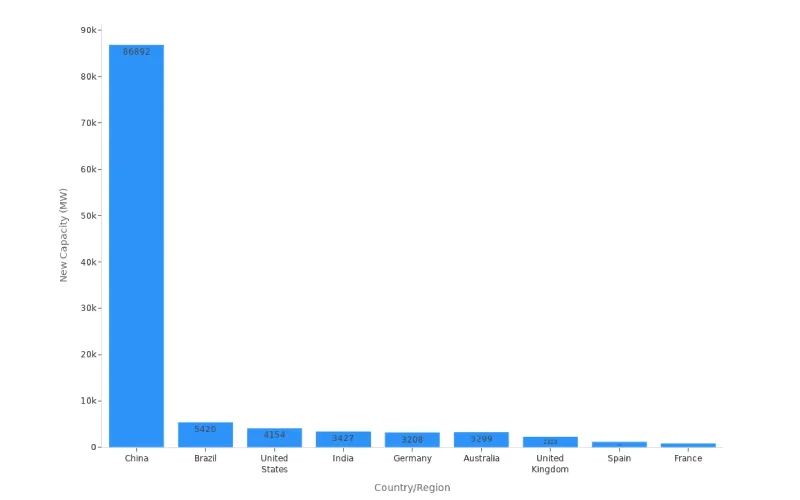
Solar energy also shows strong global momentum. China leads with 887.9 GW installed, followed by the United States and India. You notice that these countries focus on large-scale projects and policy support to accelerate renewable energy deployment. This renewables growth supports clean power targets and helps close the electricity generation gap.
Hydropower Recovery
Hydropower remains a vital part of global clean energy and electricity generation. You benefit from policy incentives like tax credits and modernization programs, which drive hydropower recovery. The Inflation Reduction Act in the United States and new project tools worldwide support pumped storage and grid reliability. These efforts improve operational efficiency and help integrate hydropower with other renewable energy sources.
However, you face challenges from climate change. Some regions, such as the Euphrates River Basin, experience reduced water flow and lower hydropower output. In contrast, high-altitude and northern areas may see increased generation due to more precipitation. For example, the upper Yangtze River in China used innovative reservoir management to boost hydropower generation by 5.7% and reduce drought risk. These advances show that clean power from hydropower can recover and grow, even as global conditions shift.
You play a key role in supporting global renewable energy deployment. By focusing on clean energy, you help drive electricity generation, grid stability, and a sustainable future.
Global Energy Policy Trends 2025
Climate Commitments
You face a year where global energy policy trends 2025 are shaped by ambitious climate commitments. Countries now act with urgency to meet climate goals and accelerate the global energy transition. At the COP29 summit, you saw major international agreements that influence your decisions and strategies:
- COP29 produced new net-zero targets and coal phase-out pledges from Indonesia, Mexico, the EU, and 25 other countries.
- Every country must submit updated nationally determined contributions (NDCs) by February 2025. These NDCs outline climate actions through 2035 and aim to limit global warming.
- COP30, scheduled for November 2025 in Belém, Brazil, will review progress on these climate goals. You must prepare for challenges such as political changes and inflation.
- COP29 pledged $300 billion annually in climate finance by 2035. This falls short of the $1.3 trillion needed, so you must focus on finalizing carbon trading rules under Article 6 to unlock new markets.
- The EU’s carbon market is advancing with faster phaseouts of free allowances and the Carbon Border Adjustment Mechanism (CBAM). These steps support investments in low-carbon hydrogen and carbon capture, utilization, and storage (CCUS).
- These commitments drive renewable energy deployment, support clean energy transitions, and encourage infrastructure for decarbonization.
You must align your strategies with these climate policy changes to stay competitive and meet global goals. Your actions now will shape the future of renewable energy and clean energy transitions.
Regulatory Shifts
You navigate a complex regulatory landscape in 2025. Global energy policy trends 2025 reflect a mix of deregulation, new standards, and investment shifts. The table below highlights the most significant regulatory changes:
| Aspect | Description |
|---|---|
| U.S. Federal Energy Policy | Accelerated oil and gas leasing on federal lands; streamlined pipeline approvals; halted new offshore wind development; push for energy independence and deregulation |
| State-Level Regulations | Stricter energy efficiency standards and emissions regulations in states like New York and California; promote sustainability and counteract federal rollbacks |
| Global Investment Trends | Upstream oil and gas investments projected to decline by 2% in 2025; shale and tight oil investments to drop by 8% |
| Renewable Energy Investment | Investments in wind and solar expected to surpass oil and gas for the first time in 2025; marks a turning point in the energy transition |
| EIA 2025 Annual Energy Outlook Updates | New modules for hydrogen markets, carbon capture, and hydrocarbon supply; reflects evolving regulatory and technological landscape |
| Business Implications | Federal incentives favor fossil fuel infrastructure; state regulations prioritize renewables and efficiency; companies must adapt to a complex regulatory environment |
You see that global energy policy trends 2025 require you to balance federal deregulation with state-level sustainability efforts. The global shift in investment from fossil fuels to renewable energy signals a major change in the energy transition. You must adapt your business to new modeling modules for hydrogen, carbon capture, and hydrocarbon supply. These regulatory shifts support clean energy transitions, renewable energy deployment, and global decarbonization goals. Your proactive action ensures you stay ahead in the global energy transition.
Energy Trends Shaping 2025
Electrification Demand
You see electricity demand reaching new highs in 2025. The energy trends shaping 2025 show that global electricity trends are driven by rapid electrification in transport, industry, and buildings. You must respond to surging electricity demand growth, which now outpaces previous forecasts. Data centers, electric vehicles, and heat pumps all contribute to this rise. You notice that electricity demand growth is especially strong in Asia and North America, where urbanization and digital services expand quickly.
You face the challenge of balancing electricity generation with climate goals. Clean energy sources like wind, solar, and hydropower must scale up to meet electricity demand growth and reduce emissions. You need to plan for flexible grids and invest in storage to handle variable electricity generation. Policymakers and business leaders set ambitious climate goals, but you must act now to close the gap between electricity demand and clean electricity generation. You play a vital role in shaping the global energy transition by supporting electrification and sustainable infrastructure.
Note: You can accelerate progress by adopting smart grid solutions and investing in resilient infrastructure. This approach helps you meet climate goals and ensures reliable electricity supply.
AI & Digitalization
You experience a digital revolution in the energy sector. AI and digitalization stand at the center of the energy trends shaping 2025. You see artificial intelligence integrated into global energy systems, optimizing electricity generation, demand, and grid management. AI-driven data centers increase electricity demand growth, but they also drive innovation in clean energy sourcing and grid reliability.
You benefit from digitalization trends such as:
- AI and machine learning for demand forecasting and predictive maintenance
- Smart monitoring and grid balancing for renewable energy
- Blockchain for secure, transparent energy transactions
- Digital twins for simulating power plant operations
- Energy-as-a-Service models for flexible, clean energy access
- Robotics and automation for safer, more efficient utility operations
- Enhanced cybersecurity to protect digital infrastructure
You must address the dual challenge of rising electricity demand growth and the need for climate action. Technology companies, utilities, and policymakers work together to ensure that electricity generation keeps pace with global electricity trends. You see that AI not only increases electricity demand but also enables smarter, more sustainable energy systems. By embracing digitalization, you help drive the global energy transition and achieve climate goals.
Geopolitics & Security
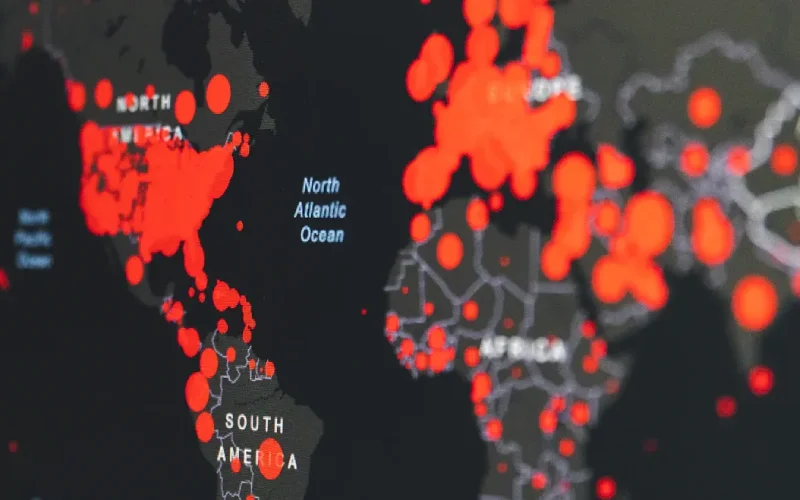
Supply Chain Resilience
You face a complex global landscape where energy security depends on resilient supply chains. Geopolitical risks have increased in 2025, making security a top priority for every global energy leader. You see the Russia-Ukraine war causing sanctions that limit Russia’s exports of oil, gas, and metals. This disruption forces European companies to seek new suppliers, often at higher costs and with longer delivery times. China’s export restrictions on rare earth metals create delays and shortages for global industries, especially those focused on renewables and electric vehicles. The U.S.-China trade war adds more trade bans and export controls, intensifying competition for critical minerals. Tensions in the Middle East and new sanctions push crude oil prices above $120 per barrel, further destabilizing global energy markets.
You can strengthen energy security by adopting several strategies:
- Conduct regular risk assessments to spot weak points in your global supply chain.
- Review supplier contracts for flexibility and fallback options.
- Improve communication between logistics, finance, and production teams.
- Invest in training and scenario planning to boost crisis readiness.
- Use digital tools like blockchain and AI for real-time supply chain visibility.
- Diversify suppliers and consider nearshoring to reduce reliance on unstable regions.
- Maintain inventory buffers to absorb short-term shocks.
Research shows that investing in supply capacity and using centralized decision-making can lower costs and speed up recovery. You build stronger energy security by making these changes, ensuring your global operations can withstand disruptions.
Regional Responses
You see different regions responding to global energy security challenges in unique ways. The European Union leads with a multi-pronged approach. You notice the EU diversifying energy imports, increasing LNG supplies from the U.S. and Qatar, and forming new partnerships with Norway and North Africa. The EU faces infrastructure limits and global competition, but it tackles price volatility and energy poverty with strategic policies.
Key EU initiatives include:
- The REPowerEU plan to end Russian fossil fuel imports by 2027.
- The Fit for 55 Package, aiming for a 55% reduction in greenhouse gas emissions by 2030.
- The Carbon Border Adjustment Mechanism to protect industries and drive global climate action.
- Accelerated green investments through the EU Innovation Fund and InvestEU.
You also see the EU modernizing its grid with cross-border interconnectors, digitalization, and a hydrogen backbone network. Nordic countries lead in electrification and smart energy systems, while Southern and Eastern Europe work to overcome legacy fossil infrastructure. The EU’s response blends climate ambition with energy security, aiming for a just and inclusive transition. As you navigate global energy security in 2025, you must adapt to these regional strategies to ensure your own resilience and support the global transition to clean energy.
Investment & Finance
Clean Energy Funding
You see global energy investment priorities shifting rapidly. In 2024, global investment in clean energy reached a record $2.1 trillion, an 11% increase from the previous year. This surge reflects your growing commitment to renewable energy and clean power. You recognize that clean energy transitions require not only more capital but also smarter financial strategies to accelerate renewable energy deployment.
To unlock further growth, you rely on a range of financial mechanisms. The table below highlights the most effective tools for accelerating clean energy funding worldwide:
| Financial Mechanism | Description | Example / Illustration |
|---|---|---|
| Catalytic Capital & De-risking | Public and philanthropic capital improves risk-adjusted returns and closes financing gaps. | Germany’s H2Global auction subsidizes hydrogen production costs. |
| Credit Insurance | Transfers counterparty default risk to insurers, improving project credit profiles. | Energetic Capital insured an offshore wind project, enabling more debt financing. |
| Public Credit Backstops | Government guarantees cover risks not accepted by private insurers. | U.S. DOE Loan Guarantee Program supports early-stage clean energy projects. |
| Blended Finance | Combines public, philanthropic, and private capital to diversify risk and attract more investment. | Altérra’s role in Brookfield’s Catalytic Transition Fund. |
| Revenue Support Mechanisms | Government-backed long-term revenue certainty absorbs early mover cost premiums. | Clean Transition Tariff by Google and NV Energy. |
| Infrastructure & Policy Support | Streamlined permitting and regulatory certainty reduce market and policy risks. | Morocco’s MASEN agency streamlines renewable energy project development. |
You benefit from these mechanisms as they lower barriers and attract private capital to renewable energy projects. By leveraging these tools, you help drive global deployment of clean energy and support the transition to a low-carbon economy.
Grid Upgrades
You understand that meeting rising electricity demand and integrating more renewable energy requires major upgrades to global power grids. Investment in grid infrastructure must keep pace with the rapid deployment of renewables and the shift toward clean power. Recent trends show a nearly threefold increase in annual global investment needs for grid upgrades, with $811 billion required by 2030 under net zero scenarios.
You see several key trends shaping grid investment:
- Significant capital flows into modernizing and expanding transmission and distribution networks for renewable energy.
- Rapid scaling of Battery Energy Storage Systems (BESS) to improve grid flexibility and reliability.
- Widespread adoption of digital grid technologies, such as digital twins and advanced analytics, to optimize operations.
- Asia Pacific leads global grid investment growth, while Europe and the Americas invest heavily in digitalization and resilience.
- Notable projects include Great Britain’s offshore wind submarine cables and California’s undergrounding for wildfire resilience.
You play a critical role in ensuring that grid upgrades keep pace with electricity demand and renewable energy deployment. By supporting these investments, you help create a resilient, efficient, and future-ready global energy system.
Fossil Fuels & Transition
Coal & Gas Role
You see coal and natural gas continue to play a significant role in the global energy mix for 2025. The following table highlights the projected trends for coal:
| Aspect | Projection / Trend for 2025 |
|---|---|
| Coal demand in developed economies | Decline continues but at a slower pace: EU (-12%), US (-5%) in 2024, less steep than 2023 declines. |
| Coal demand in developing countries | Growth expected in Indonesia, Vietnam, India; coal remains key for economic growth in emerging markets. |
| Global coal production | Expected to reach record highs in 2024, exceeding 9 billion tons; China produces half, India +7% growth. |
| Coal exports | Record high international coal trade (~1.55 billion tons in 2024), driven by Asian markets (China, India). |
| Coal prices | Elevated above pre-pandemic levels; European thermal coal ~$120/ton, Australian ~$140/ton as of late 2024. |
| Coal-fired power generation | Supported by rising electricity demand, especially in India; temporary resurgence in US due to high gas prices. |
| Overall 2025 outlook | Global coal demand unlikely to decline significantly; may reach new highs despite declines in Europe and US. |
Natural gas remains a key transitional fuel in the global energy transition. You rely on gas to stabilize power systems and complement renewable sources. LNG demand surged in Asia and Europe as you diversify away from Russian pipeline gas. The US and Qatar expanded LNG export capacity, with global supply growth expected to rebound to nearly 6% in 2025. Despite climate scrutiny, natural gas supports industrial applications and offers a pragmatic path toward low carbon energy, especially when paired with low-carbon technologies like carbon capture.
Decarbonization
You drive global decarbonization efforts by adopting a range of strategies. Major economies set science-aligned net-zero targets with clear milestones. You prioritize energy efficiency in buildings and industry. You expand renewable deployment through solar and wind projects. Electrification of transport and industry replaces fossil-fueled equipment with electric alternatives. You innovate with low-carbon technologies, such as green hydrogen and waste heat recovery.
You benefit from government policies like carbon pricing, emissions trading systems, and tax credits that support clean energy investments. National decarbonization roadmaps and binding legislation guide sectoral emissions reductions. You engage your supply chain to reduce emissions and require climate disclosures from suppliers. Robust measurement and verification frameworks ensure transparency and accountability.
The 2025 Energy Transition Index shows broad improvements in sustainable energy adoption, with Nordic countries leading. Clean energy investment surpassed $2 trillion in 2024, supporting over 16 million jobs globally. However, you recognize that annual investments still fall short of what is needed to meet net-zero targets by 2030. You play a critical role in accelerating the global energy transition by scaling up low-carbon technologies and supporting global climate goals.
Technology & Innovation
Storage Solutions
You see battery storage at the center of the global energy transformation in 2025. Battery storage costs dropped sharply, with lithium-ion batteries reaching a record low of $115/kWh in 2024. This price drop, combined with increased manufacturing capacity, makes battery storage more accessible for utilities and businesses worldwide. The US energy storage market grew by 80% year-over-year, with annual installations hitting 11.9 GW. You notice similar trends in China, Europe, and Latin America, where battery storage deployment continues to surge.
- Battery storage investment grew over 20% in 2024, surpassing $50 billion.
- Lithium-ion battery costs fell 40% in one year, continuing a decade-long trend.
- Battery storage supports large loads like data centers and manufacturing, which will add 53 GW of new demand over the next decade.
- Regulatory reforms, such as FERC Orders 841 and 2222, make it easier for battery storage to participate in wholesale markets.
- State-level clean energy goals in 23 states, DC, and Puerto Rico drive battery storage as a key part of grid reliability.
- Safety regulations and new procurement strategies help manage risks and encourage domestic manufacturing.
You benefit from these advancements as battery storage becomes essential for integrating renewables and supporting global electricity demand. Industrial policies now focus on clean energy manufacturing, jobs, and energy security, making battery storage a pillar of low-carbon technologies. As AI and data centers drive global electricity demand, you rely on battery storage for reliable, clean, and stable power.
Super Grids
You witness the rise of super grids as a solution for cross-border renewable energy transmission. The One Sun One World One Grid (OSOWOG) initiative connects regions from Australia to the US, creating a global network that shares renewable energy across continents. This global super grid reduces electricity system costs by about 3.8% compared to isolated systems. You see that super grids enable transmission across 18 time zones, improving interregional connectivity and cost optimization. However, while super grids support global renewable energy sharing, they do not always lead to higher solar investments. You recognize that super grids focus on linking regions and optimizing costs, but you must also invest in low-carbon technologies to maximize the benefits of global energy integration.
Infrastructure & Industrial Solutions
Linkewell Power Transformers
You play a vital role in the global shift toward clean energy by choosing reliable infrastructure. Linkewell power transformers support your projects in wind power, photovoltaic systems, energy storage, and electric grids. These transformers withstand harsh conditions, such as extreme temperatures and vibration, to ensure stable operation. You benefit from advanced features like low-loss cores, surge protection, and temperature monitoring. These features help you reduce downtime and improve efficiency. Linkewell transformers use dry-type insulation, which eliminates fire hazards and environmental risks. You gain peace of mind knowing that these transformers meet IEC standards and use flame-retardant materials. This commitment to safety and reliability supports global energy security and the transition to smart grids.
Recommended products
Linkewell Control Panels
You need control panels that keep your operations running smoothly in a global energy landscape. Linkewell control panels manage power flow for machines, HVAC, and data centers. You can customize these panels for your specific needs, whether you work in manufacturing or renewable energy. The panels include certified components and advanced safety features, such as overload protection and real-time monitoring. You save time with easy installation and clear labeling. These panels help you maintain clean energy systems and support global energy security by ensuring reliable automation and control.
Linkewell Distribution Boxes
Recommended products
You rely on Linkewell distribution boxes to enhance safety and efficiency in global energy distribution systems. These boxes meet strict international standards, including UL and CE certifications. You can use them indoors or outdoors, thanks to their high protection ratings and anti-corrosion materials. Features like circuit breakers, emergency stop buttons, and real-time fault monitoring help you isolate problems quickly. Modular designs allow you to scale your system as your global operations grow. With Linkewell, you maintain continuous, safe, and efficient power distribution—key to supporting clean energy and energy security worldwide.
Workforce & Equity
Job Creation
You see the energy sector transforming the global workforce in 2025. As you focus on the clean energy transition, you notice job opportunities expanding faster than ever. Renewable energy jobs now grow at more than twice the rate of the overall labor market. In fact, jobs in renewable energy generation employ three times more workers than traditional energy sources. You benefit from this shift as new roles emerge in solar, wind, and water power, as well as in advanced manufacturing and sustainable transportation.
- The energy sectors with the highest job growth in 2025 include:
- Energy efficiency (buildings, advanced materials, industrial decarbonization)
- Renewable power (solar, wind, water, geothermal)
- Sustainable transportation (bioenergy, hydrogen, fuel cells, vehicles)
You see over 8 million people working in renewable energy worldwide. The Department of Energy supports workforce development by standardizing training, connecting education to careers, and incentivizing quality job creation. These efforts help you build a skilled workforce ready to meet climate goals and support stable market growth.
Tip: By investing in workforce training and education, you can ensure your organization stays competitive in the evolving energy landscape.
Energy Access
You play a crucial role in expanding energy access and promoting equity. As of 2025, nearly 92% of the global population has electricity, but over 666 million people still lack access. Most of these individuals live in sub-Saharan Africa, where 85% of the unelectrified population resides. You see renewable energy now making up almost 30% of global electricity consumption, reflecting progress in clean energy deployment and climate action.
Barriers to universal energy access remain. These include limited scale, high financial risk, supply chain gaps, and affordability—especially for women-headed households. Rural areas face the greatest challenges, with 84% of those without electricity living outside cities. You address these issues by supporting integrated electrification approaches, such as distributed energy resources and off-grid solar solutions. These methods lower costs, speed up deployment, and improve reliability.
- Key strategies for improving energy access:
- Combine grid extension with distributed energy resources
- Invest in off-grid solar for rural communities
- Support demand stimulation and energy efficiency programs
- Address gender disparities in access and affordability
You help close the energy gap and advance climate resilience by championing these solutions. Your actions drive progress toward universal, equitable energy access.
You face a rapidly changing energy landscape in 2025. Key trends include the growing complexity of the clean energy transition, the need for genuine net zero action, and the importance of adapting to climate impacts.
- Stay informed about evolving risks, regulations, and supply chain challenges.
- Prioritize stable policies, innovation, and international cooperation for long-term success.
- Accelerate low-carbon investments and address infrastructure gaps to remain competitive.
Linkewell’s advanced solutions help you build resilient, efficient systems. Explore how you can lead the way in future-ready energy with the right partners.
FAQ
What are the main benefits of upgrading to smart grid infrastructure?
You gain improved reliability, faster outage response, and better integration of renewable energy. Smart grids help you monitor energy use in real time and reduce operational costs. These upgrades support your transition to cleaner, more efficient power systems.
How do Linkewell power transformers support renewable energy projects?
You use Linkewell power transformers to ensure stable voltage and safe operation in wind, solar, and energy storage systems. These transformers withstand harsh environments and meet strict safety standards, helping you maintain reliable and efficient renewable energy operations.
Why is battery storage important for modern energy systems?
You rely on battery storage to balance supply and demand, store excess renewable energy, and provide backup during outages. Battery storage improves grid stability and supports your move toward cleaner, more flexible energy solutions.
What should you consider when choosing an electrical control panel?
You should check for certifications, safety features, and compatibility with your equipment. Look for panels that offer customization, easy installation, and reliable components. These factors help you ensure safe and efficient power management in your facility.
How can you improve energy access in remote areas?
You can combine grid extension with off-grid solar solutions and distributed energy resources. Investing in affordable, modular systems helps you bring electricity to rural communities quickly and cost-effectively.
Conclusion
The Global Energy Policy Trends 2025 call for urgent and strategic action to meet climate goals, support electrification, and enhance energy security. Despite record investments in renewables, critical gaps remain in infrastructure, financing, and access. Linkewell helps bridge these gaps with future-ready transformers, panels, and distribution solutions. Partner with Linkewell to power your clean energy transition—reliably, safely, and efficiently.

